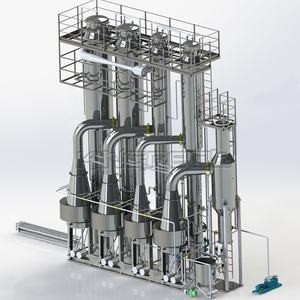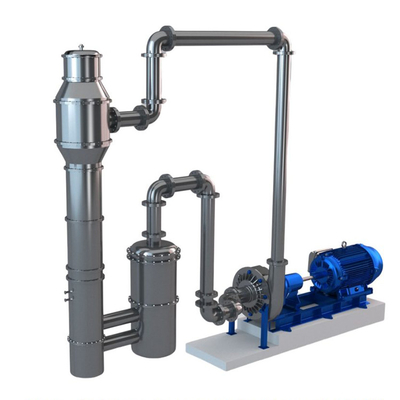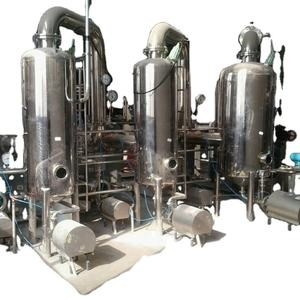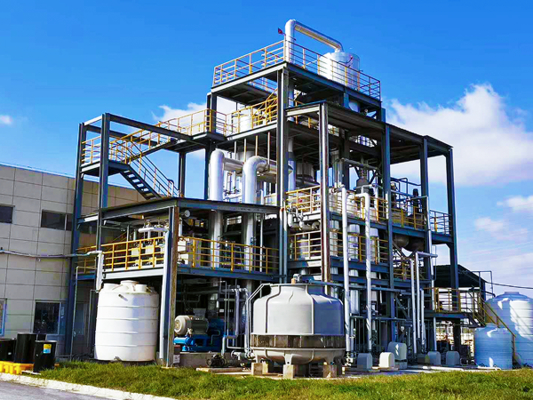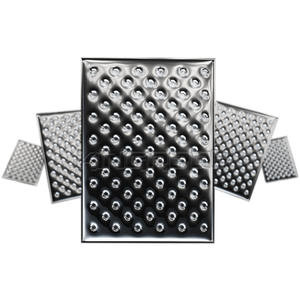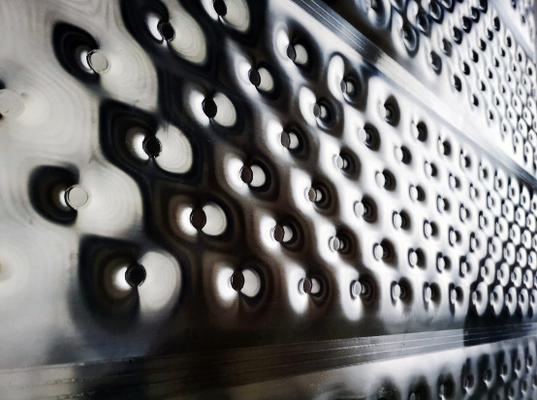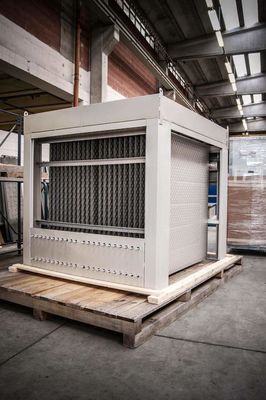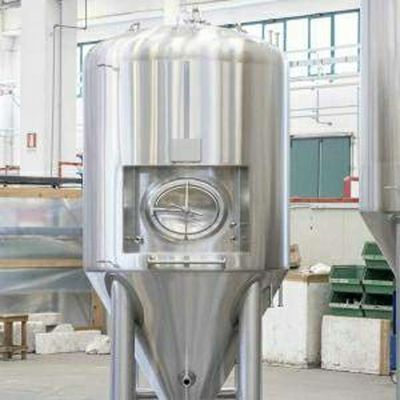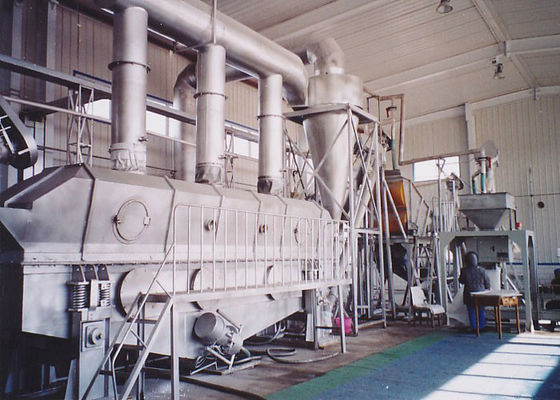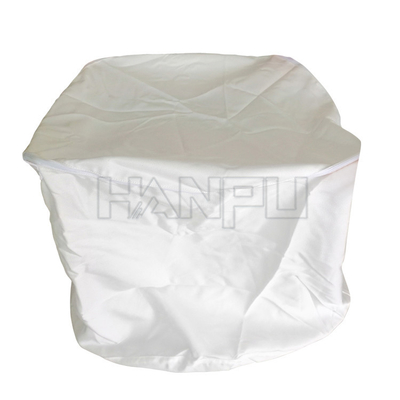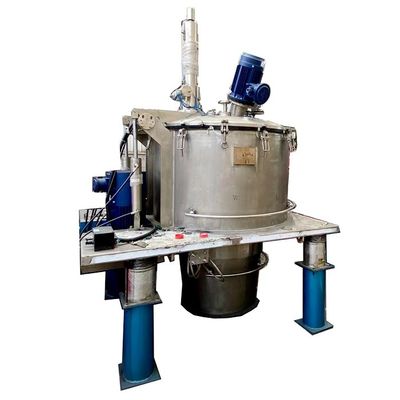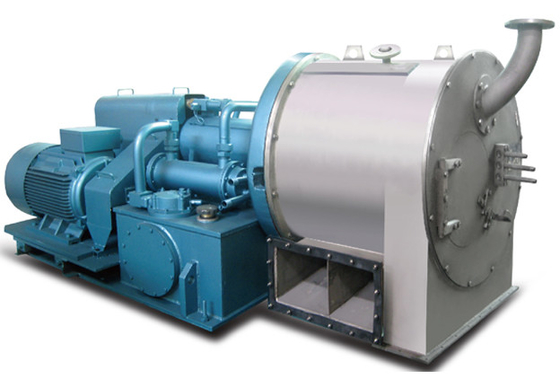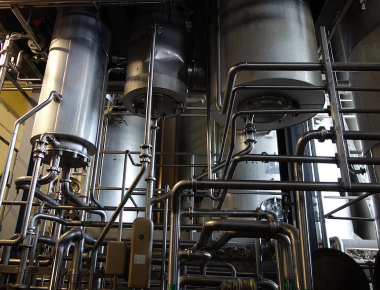MVR Evaporators for Inorganic Salt Mother-Liquor Reduction
Engineered to cut disposal volume, recover reusable water and valuable salts, and lower energy bills for crystallizer mother liquors and high-TDS process streams.
Inorganic salt production often leaves large volumes of mother liquor with high TDS, high BPE, and severe scaling tendencies (e.g., CaSO₄, silica). Traditional thermal methods depend on costly steam and vast utility capacity. Our MVR-centered EPC/turnkey solutions bring factory-grade control to evaporation and concentration, delivering electricity-driven heat recycling, compact layouts, and reliable anti-fouling performance.

Key Advantages
 High Volume Reduction - Reduce disposal volume by 70-95%, enabling ZLD or near-ZLD targets.
High Volume Reduction - Reduce disposal volume by 70-95%, enabling ZLD or near-ZLD targets. Energy Efficient - Electrical SEC typically 8-20 kWh/m³ evaporated; lower OPEX vs. steam-only systems.
Energy Efficient - Electrical SEC typically 8-20 kWh/m³ evaporated; lower OPEX vs. steam-only systems. Anti-Fouling Design - Forced-circulation, optimized ΔT (≈3-8 K), demister & NCG management for long runs.
Anti-Fouling Design - Forced-circulation, optimized ΔT (≈3-8 K), demister & NCG management for long runs. Right Materials - 316L / 2205 / 904L / Ti / Hastelloy per chloride & corrosive load; proven for brines.
Right Materials - 316L / 2205 / 904L / Ti / Hastelloy per chloride & corrosive load; proven for brines.
What You'll Get with Our EPC/Turnkey Delivery

- Measurable Cost Down: MVR electrification replaces fresh steam; typical utility savings vs. single-effect steam are 30-60% (site-dependent).
- Water & Salt Recovery: Recover reusable condensate water and route concentrated brine to crystallization for saleable salts or safe disposal.
- Stable, Clean Operation: CIP-ready layouts, velocity windows, and entrainment control secure compressor reliability and product consistency.
- Compact & Retrofit-Friendly: Modular skids shorten installation and minimize production downtime.
Delivery Workflow
Feed & BPE Analysis → Process Design & Simulation → Pilot / Bench (optional) → Detailed Engineering → Fabrication & FAT → Installation & Commissioning → Performance Test & Training → O&M / Spares / Remote Support
Typical Design Window (indicative)
| Operating Temperature / Pressure |
~60-90 °C under ~20-80 kPa(abs), product & BPE dependent |
| Temperature Lift (ΔT) |
~3-8 K across calandria (smaller ΔT → higher COP & cleaner surfaces) |
| Heat Exchanger |
Falling-film for cleaner feeds; Forced-circulation for fouling/viscous or crystallizing duties |
| Electrical SEC |
~8-20 kWh per m³ evaporated (≈0.03-0.08 kWh/gal), site-dependent |
| Materials |
316L / 2205 / 904L / Ti / Hastelloy as required by chloride/corrosion |
* Ranges are typical; final design depends on your feed composition, BPE curve, fouling/foaming tendency, utilities and product specs.
Applications

Our MVR solutions adapt to a broad set of inorganic mother liquors and side streams:
- Sodium Sulfate / Glauber's Salt Mother Liquor - pre-concentration and recycle to crystallizers.
- Sodium Chloride / Vacuum Salt Lines - brine concentration and mother-liquor reduction ahead of centrifuge & dryer.
- Soda Ash / Chlor-Alkali - high-chloride brines with anti-fouling forced-circulation designs.
- Phosphate / Fluoride-Bearing Liquors - materials upgrade and condensate polishing options.
- Potash & Mixed-Salt Systems - hybrid MVR+MEE integration and crystallizer coupling.
- RO Reject / ZLD Brines - volume minimization and water reuse.
Frequently Asked Questions
Q1: How do you prevent scaling (e.g., CaSO₄, silica) inside the heater?
We combine forced-circulation velocities, optimized ΔT, demister/entrainment control, and tailored CIP regimes (alkali/acid). For crystallizing duties we separate crystal growth in a downstream crystallizer rather than inside the main exchanger.
Q2: Why choose MVR over MEE for mother-liquor reduction?
MVR recycles its own vapor using electricity, typically lowering utility costs and shrinking the boiler load. For very high BPE or extreme scaling we often deploy a hybrid MVR+MEE train to balance SEC and reliability.
Q3: What condensate quality can we expect?
For inorganic systems, distillate is usually low-conductivity and reusable; where volatiles exist we add condensate polishing (stripping, carbon, ion-exchange) to meet reuse/discharge specs.
Q4: What information do you need for a proposal?
Feed flow & composition, TDS and BPE curve, target concentration, scaling/foaming tendency, utilities (power tariff/steam/cooling), footprint limits, and desired payback. We'll return an SEC/TCO estimate and a preliminary PFD.
Get a Tailored Design & Energy Model
Send us your feed analysis and targets to receive a one-page SEC/TCO model and a proposed MVR or MVR+MEE route for your mother-liquor reduction project.

 Your message must be between 20-3,000 characters!
Your message must be between 20-3,000 characters! Please check your E-mail!
Please check your E-mail!  Your message must be between 20-3,000 characters!
Your message must be between 20-3,000 characters! Please check your E-mail!
Please check your E-mail! 
